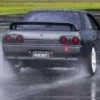SA Wasteland?
Announcements
-
Similar Content
-
Latest Posts
-
Another thought on this OLD topic: When you paint your bonnet lip, leave a small unpainted back lip/line along the back of the lip, where it rests on the bumper. That way, the line in the back is much more prominent than the gaps in the front/under the lip - and it breaks the hood-to-bumper connection at the "correct" place, when comparing to a GTR. I'm gonna do this with mine this week, so stay tuned for pics!
-
By Radical_Goodspeed · Posted
So I'm in the final stages of assembling my single turbo RB30/26 and had a question regarding MAP reference points. I've seen several recommendations such as tapping the cylinder 2/3 ITB, tapping the intake manifold at cylinder 2/3, or using a point on IAC. First two are doable but require permanently modify part and the third is "out" as I plan to delete the IAC. All that to say my question is can I used the "bleeder" in the center of the ballance tube as a MAP Reference? I'm running a catch can so I don't need it for the PCV system. My thought process is it "pulls" from all 6 cylinder, and it's between the ITB and the cylinders making it ideal for MAP reference according to what I can find. Thoughts? -
So, cams are not getting installed......yet Had a good chat with MX5 Mania about intakes, they recommend not to get ITB's, they recommend a plenum style for the NC So, one of these puppies is being ordered, with a larger TB to suit, when it arrives from the US the car will go in for the cams and intake I'm also getting a fancy rear box bit for the air filter box which will suit the new TB size
-
Clamp meter is pointless. Unless you're trying to keep average current under a set value for some weird reason (maybe you undersized your wiring?), then you'll get no useful info. What you're really trying to target is the flow of fuel coming back to the tank. You want some, but not a lot. You also want to make sure fuel pressure remains stable. So, fuel pressure gauge, and fuel flow gauge. Set it up from that.
-








Recommended Posts